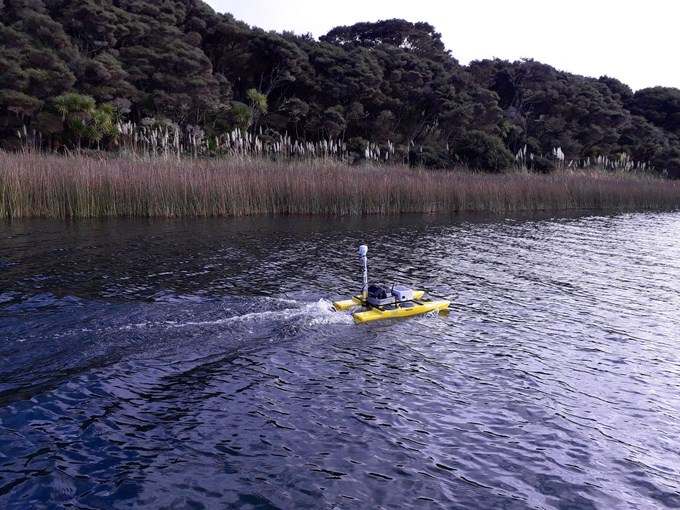If you’ve made a trip down to the shores of Lake Rototoa on the south head of the Kaipara Harbour recently, you might have happened across a little boat floating along on its own.
While this boat may seem like the folly of a retired gentleman, it’s no toy - this boat is something a little more special.
Bobbing up and down as it traverses the lake, this boat has been charged with recording and reporting underwater data for NIWA researchers to interpret and provide baseline information to Auckland Council’s environmental team from which management interventions will be developed.
The project is investigating the cause in the decline of water quality in the lake.
So how does this piece of technology work?
This engineering advancement combines autonomous boat technology with hydroacoustic data collection, sending out sound waves as it travels across the lake, allowing it to gather data to map the lake bed, gauge sediment type, vegetation cover and send it back to researchers.

It is believed one factor causing the problem is the presence of introduced fish such as perch and tench.
“This data will allow us to find opportunities to manage these fish,” says Senior Biosecurity Advisor Belinda Studholme. “The maps will show us where their preferred habitats are, so we can design our control methods around these spots.”
“It’s also assisting us in identifying hotspots for invasive weeds, so we can protect this precious environment for our native biodiversity.”
It will also be utilised to determine gains made with restoration and protection programmes and contribute to monitoring of submerged vegetation cover.

“The development and implementation of this technology will allow the extent of submerged vegetation and the underwater environment of more lakes to be assessed more frequently, efficiently and precisely,” says NIWA Freshwater Ecologist Dr Daniel Clements.
The $24,000 cost of the project was funded by the Natural Environment Targeted Rate and also included work on Lake Tomarata and a submerged plant survey by NIWA divers.


